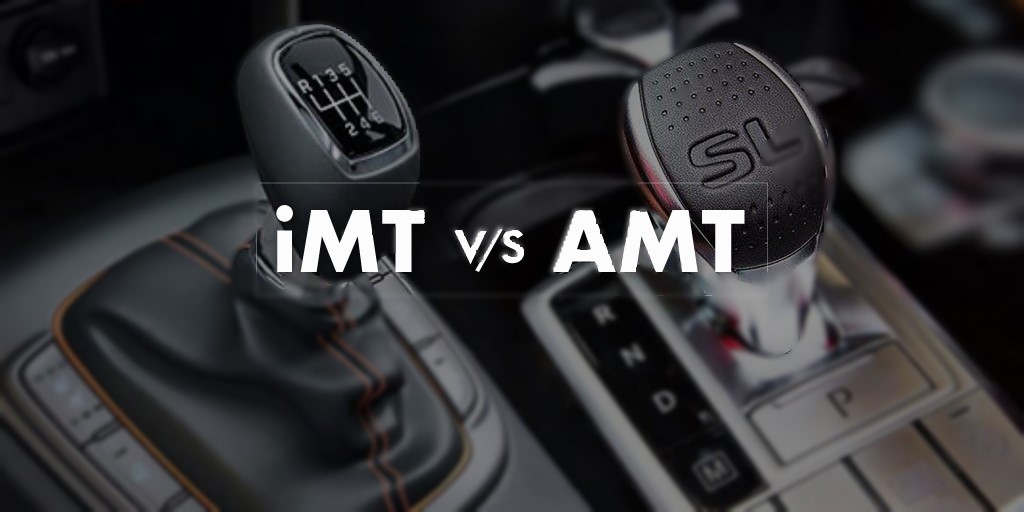Difference Between IMT & AMT Transmission.

IMT

IMT symbolizes Intelligent Manual Transmission. This transmission technology simply removes the clutch pedal usage thus reducing a major point of engagement a driver has with the car. The IMT technology foregoes the clutch pedal and operates the clutch plate and pressure plate electronically, with the help of sensors .The transmission works with a conventional H gearbox which in turn works with the engine of the car. To explain it in even simpler terms, the IMT transmission removes the clutch pedal and uses sensors to use the default clutch while the power to change gears is managed by the driver. Hyundai & KIA motors has introduced their few cars with IMT.
So, the IMT knocks out the need of a clutch pedal. To understand the logic, imagine we are driving a car with a manual gearbox. Usually what happens when we change the gears, we press the clutch pedal and take our foot off the accelerator and shifts the gear with the help of the gear knob. A car with IMT technology, there is no clutch pedal installed. So, our left foot is literally resting while driving. When we feel there is a need to change the gears, just we have to slot the gear knob into the required position and shift up or down like we normally do. It may not feel smooth initially as we are not used to the type of gear shifting but it will get familiar as we continue driving for few days and it will give stress free driving experience when we are driving the car on rush roads and in bumper to bumper traffic situation. So basically it’s just a matter of getting used to the.
The IMT technology eliminates the clutch pedal usage and operates the clutch plate and pressure plate electronically, with the help of sensors.
Now, we will understand the technology behind this type of transmission. In an intelligent manual transmission, there is a clutch that given but it is operated electronically with the help of a multitude variety of sensors and not by a clutch pedal that needs to be pressed every time to change the gears. A car with IMT transmission there is an ‘intention sensor’ on the gear lever of an IMT-equipped car is triggered when the ratios are changed. When the gears are altered, the gearbox control unit, or TCU, receives a signal from the intention sensor on the gear lever. subsequently when the gear is moved up or down, the TCU signals the hydraulic clutch actuator to engage or disengage the clutch plate. Here, the actuator’s purpose is to produce hydraulic pressure, which is then transferred to a concentric slave cylinder (CCS) to engage or disengage the clutch plate.
AMT

AMT stands for automated manual transmission. The automated manual transmission (AMT) is a type of transmission used in car by different automakers. It is actually a conventional manual transmission equipped with an automatic actuation process with the help of an actuator to operate the clutch and/or shift the gears by the driver.
Automated manual transmissions can be semi-automatic or fully-automatic in its mechanism. Some other mechanism to automate the clutch and/or shifting gears have been used over the years, but they will generally use one of the following methods of actuation for the clutch and/or shifting: hydraulic or electro-hydraulic actuation, electro-mechanical, pneumatic, electromagnetic, or even purely electrical using an electric motor.
Gear shifting, clutch actuation, shift-timing, and rev-matching are all under automated mechanism through electronic sensors, ecu, and actuators. While shifting gears, the driver selects the required gear with the transmission shift lever, while electronic sensors and actuators connected to a TCU (transmission computer) or microprocessor will automatically operate the clutch and throttle to match revs and to re-engage the clutch in milliseconds. Torque and power transfer to the drive wheels will also be electronically controlled.




Leave a Comment